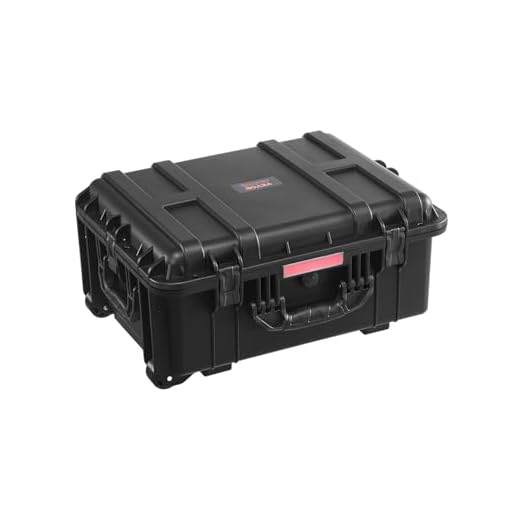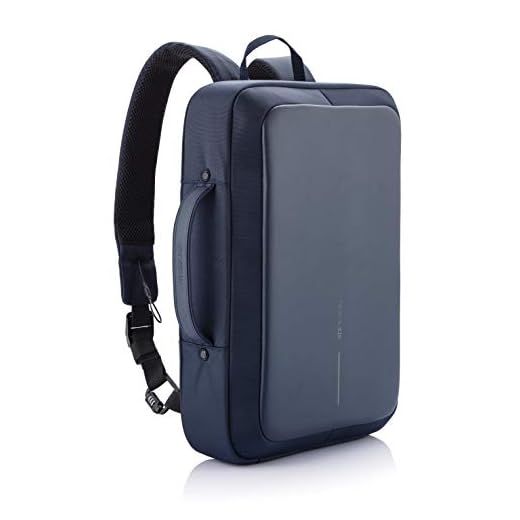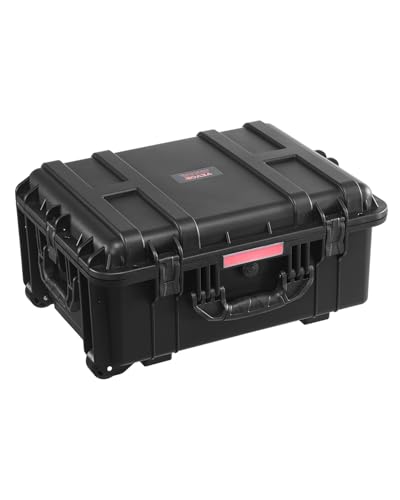

Packing: Wrap each item individually with 3–4 layers of bubble wrap, place corrugated board between stacked pieces, and use the double-box method (item + inner box, then fill outer box with 5–7 cm of foam or packing peanuts). Add silica gel sachets for moisture control and secure lids with tape. Position the boxed set in the centre of a hard-sided cabin case surrounded by soft clothing to absorb shocks.
Dimensions and weight: Common cabin size allowance is 56 × 36 × 23 cm (22 × 14 × 9 in); typical free carry-on weight limits fall between 7–10 kg depending on the carrier. Verify the specific allowance for the chosen airline and the connecting carriers before departure.
Security screening: Items are subject to X-ray and possible manual inspection; keep boxes accessible and be prepared to unwrap if asked. Liquid rules do not apply to ceramic tableware, but delicate objects may be inspected visually and handled by security staff.
Customs and documentation: For high-value or antique ceramic ware, carry purchase invoices, provenance photos and any required export permits. Declare items that exceed national duty-free thresholds at arrival; failure to present documentation can result in seizure or fines in some jurisdictions.
Checked-bag alternative and insurance: Checked compartments expose fragile goods to greater mechanical stress; if unable to fit into cabin allowance, use a rigid crate, impact-absorbing foam, and purchase additional transit insurance or use a specialist art/shipment service. Photograph each piece before travel and record serial numbers or markings for claims.
Practical tip: Place the most fragile single piece under the seat in front if possible (less lateral movement than overhead bins) and request gate assistance for stowing unusually shaped boxes when boarding.
Transporting china in cabin bags: practical guidance
Store fine china inside cabin baggage when possible; security screening permits ceramic tableware but fragile pieces fare better in cabin than in the hold.
- Security rules: solid ceramic items are generally allowed through security checkpoints; expect X‑ray inspection and occasional manual checks for dense or oddly shaped pieces.
- Carrier limits: verify specific airline cabin-size and weight allowances before departure – common dimensions are ~55×40×20 cm and weight limits around 7–10 kg, though some operators differ.
- Packing method:
- Wrap each item separately in bubble wrap or thick foam; secure lids and handles with tape and padding.
- Place wrapped pieces in a rigid box or hard-sided case; surround with soft clothing layers to absorb shocks.
- Position the box centrally inside the bag, cushioned on all sides; avoid direct contact with zippers or corners.
- Onboard stowage: place the case under the seat if dimensions allow; otherwise use an overhead bin and wedge the box so it cannot shift during taxi or turbulence.
- Valuables and antiques: for high-value ceramics obtain a valuation certificate, inquire about cultural export permits if crossing borders, and consider professional crating or courier freight with declared value.
- Insurance and claims: check travel- or shipping-insurance coverage for breakage; photograph items before travel and retain purchase/valuation documents to support any claim.
- At security or gate queries: present fragile pieces calmly for inspection; separating items into smaller containers speeds checks and reduces handling risk.
Which airlines allow ceramics in cabin and what policies to check
Immediate guidance: Place ceramic items in a rigid carry-on within the chosen carrier’s cabin-size limits, wrap each piece individually, declare high-value antiques to the airline ahead of time, and request gate-check or special handling if bins are full.
Major carriers – typical allowances and practical notes
British Airways: Standard cabin allowance is one cabin bag (56 × 45 × 25 cm) plus a personal item. Fragile tableware is accepted inside that allowance; gate staff may ask to stow bulkier or oversized pieces in the hold if bin space is limited.
Lufthansa: Typical cabin dimensions 55 × 40 × 23 cm; one carry item plus a personal item permitted. No blanket ban on ceramics, but weight rules and overhead space constraints apply; declare oversized fragile articles during check‑in.
Air France / KLM: Common limit 55 × 35 × 25 cm for cabin bags. Fragile items allowed when properly packed; regional and low-cost affiliates may tighten carry-on counts, increasing the chance of gate-checking.
Delta / United / American (US majors): Typical cabin size ~22 × 14 × 9 in (56 × 35 × 23 cm) plus a personal item. Domestic routes generally accept delicate ceramics in cabin if within size/weight and screened by security; international itineraries may add customs/handle restrictions.
Emirates / Qatar Airways: More generous cabin allowances on many fare types but strict enforcement of bin space at boarding. Luxury or fragile items handled better when declared at check-in or booked as fragile carry-on with special handling request.
Policy checklist to verify before travel
Cabin dimensions & piece count: Match the exact size and number allowed on the booked fare; carriers often reject oversized items at boarding.
Weight limits: Confirm per-piece or per-person weight caps; overweight carry items may be gate-checked to the hold.
Security screening: All ceramics must pass X‑ray; dense or wrapped items may be opened for inspection at security or by cabin crew.
Antiques & high value: Declare provenance and value to the carrier and to customs for international travel; obtain a condition report and photographic inventory.
Packaging and placement: Use hard cases, bubble wrap, clothing layers, and place single fragile items under the seat where movement is minimal; tag cases as FRAGILE and inform gate agents if extra care is needed.
Insurance and claims: Check airline liability limits for damaged carry items and purchase additional transit insurance if declared value exceeds carrier compensation caps.
Advance contact: Contact the carrier’s baggage or special assistance desk 24–72 hours before departure to request guidance, reserve bin space when possible, or coordinate alternative handling.
How airport security screens ceramic tableware and decorative ceramics
Recommendation: pack fragile ceramic pieces inside a hard-sided carry-on with at least 3 cm of foam or bubble wrap around each item; position objects centrally surrounded by soft clothing and use individual sleeves for cups and saucers.
Imaging technologies and operator review
Most checkpoints use CT-style 3D scanners or dual-view X‑ray. Ceramics register as high-density inorganic material with defined outlines; glazes containing metal oxides produce localized bright spots that automatic threat-recognition software may flag. Opaque shapes that obscure signatures of nearby items often trigger image enhancement or removal from the belt for closer examination. Decorative objects larger than common cabin bag dimensions (≈56 x 36 x 23 cm) are usually processed separately from standard carry-on flow.
Inspection flow, detection types and handling
Standard sequence: X‑ray/CT → if anomaly detected then ETD swab → if residue indicated then manual opening and hands-on inspection. Security officers request access and will handle fragile items while wearing gloves; fragile objects are not routinely x-rayed separately unless image ambiguity requires it. Repairs using metal staples, internal cavities, mixed-material mounts or wiring for lights raise the probability of manual inspection. For antiques, presenting condition reports and provenance photos accelerates verification; avoid covering makers’ marks with tape or permanent wrapping.
| Screening method | What security looks for | Packing implication |
|---|---|---|
| X‑ray / CT | Shape, density contrasts, metal inclusions in glaze or fittings | Keep items separated; avoid stacking; use neutral-colored padding to reduce image clutter |
| ETD swab | Trace explosives or accelerants on surfaces | Wrap in clean materials; remove loose powders or residues that might trigger a swab |
| Manual inspection | Hidden cavities, repairs, attached hardware, condition checks | Allow quick access by removing only outer wrapping; keep inner padding intact; have documentation ready |
Packing checklist: padded sleeves, foam inserts or molded trays; fill voids with clothing; immobilize handles and bases; photograph items pre-travel; register high‑value antiques with the carrier ahead of departure. For upholstery or seat covers soiled during transit, see how to clean cat puke off couch.
Packing materials and layering techniques to prevent fine china breakage
Wrap each item individually with three protective layers: acid-free tissue, a 3–5 mm closed-cell polyethylene foam sheet, and two complete turns of bubble wrap (small-bubble inner layer, large-bubble outer layer).
-
Prepare the case base:
- Line the bottom with 5 cm (2 in) closed-cell foam or a 5 cm layer of compressed biodegradable packing peanuts to absorb vertical impact.
- Place a 3–5 mm corrugated cardboard sheet over the foam to create a flat platform for items.
-
Plate and flatware technique:
- Wrap each plate in tissue, then foam sheet, then bubble wrap. Stack plates vertically (record-style) with corrugated cardboard dividers between each plate.
- Limit stacked groups to six plates per bundle; secure the bundle with two soft straps or tape that won’t crush edges.
-
Cups, mugs and handled pieces:
- Stuff interiors with tissue to prevent internal vibrations. Wrap handles separately with foam rings or foam blocks to prevent shear stress.
- Nest cups only when using foam liners between nested surfaces; otherwise pack single with 2.5–5 cm of cushioning all around.
-
Vases, figurines and hollow forms:
- Fill cavities with tissue, then contour with PU foam or foam-in-place for a custom fit. Allow foam to cure before additional wrapping.
- Use double-boxing for high-value items: inner box with 5 cm clearance on all sides filled with foam peanuts or air pillows, then a rigid outer box with another 5 cm cushion layer.
-
Cushion thickness and materials:
- Maintain at least 5 cm of protective material between any fragile surface and an external wall; high-risk transport merits 7–10 cm.
- Preferred materials: cross-linked polyethylene foam sheets (3–10 mm), closed-cell foam blocks, small-bubble wrap (3/16″), biodegradable peanuts, air pillows for void-fill.
-
Securing and orientation:
- Place heaviest pieces at the center and lowest point of the case; surround with soft clothing only as secondary padding, not as the main structural cushion.
- Suspend inner boxes with foam strips or wedge blocks to prevent contact with outer box walls. Mark package with ‘FRAGILE’ and ‘This Side Up’ arrows.
-
Taping and sealing:
- Use 48–60 mm (2–2.5 in) filament or reinforced tape across all seams; apply three full-length tape strips on top and bottom seams and two on each side.
- Seal double-box gaps with adhesive foam tape to prevent moisture ingress during screening or handling.
-
Quick materials checklist (per small shipment):
- Bubble wrap: 3–5 m small-bubble, 3–5 m large-bubble
- Foam sheets (3–5 mm): 4–6 pieces
- Closed-cell foam or packing peanuts: enough for 5 cm surround
- Corrugated dividers: sheet per plate group
- Cardboard inner box + rigid outer box, tape 48–60 mm, air pillows (6–12)
Keep rigid items such as umbrellas in their own sleeve or compartment to avoid point-pressure damage; see best british made umbrellas for compact, travel-friendly models that reduce risk of harm to fine china when packed together.
Size, weight and quantity limits that affect carrying china onboard
Limit ceramic tableware carried in the cabin to items that fit inside the carrier’s permitted cabin-bag dimensions and the single-piece policy; if packaged dimensions or total mass exceed cabin allowances, place the shipment in checked baggage (standard checked allowance: 23 kg / 50 lb and 158 cm / 62 in linear dimension is typical).
Typical dimension and mass thresholds
Common cabin-bag size brackets: 55 × 40 × 20 cm (21.5 × 15.7 × 7.9 in), 56 × 45 × 25 cm (22 × 18 × 10 in) and the US domestic common 22 × 14 × 9 in (56 × 36 × 23 cm). Low-cost carriers frequently impose cabin mass limits of 7–10 kg (15–22 lb); legacy carriers may not state a strict cabin mass but will enforce one-piece rules and may gate-check overweight items. Checked-baggage norms useful for larger ceramic shipments: 23 kg (50 lb) per bag and 158 cm (sum of length + width + height) maximum linear size.
Counting pieces and fitting strategy (measure before packing)
One cabin piece plus one personal item is the most common allowance; multiple boxed plates often force a second piece and therefore a checked item. Under-seat dimensions (roughly 40 × 30 × 15 cm) limit bowls/platters that must be stowed under the seat; anything wider than the rib-cage of the bag will need overhead storage and must conform to cabin size limits. Use this quick check: measure boxed diameter and stack height – if diameter > cabin-bag width or stack height > bag depth, move items to checked baggage. Example calculation for stacked dinner plates: total height = N × plate thickness + (N−1) × interleaving padding + top/bottom padding. For four 25 cm plates with 0.8 cm thickness and 2 cm padding between plates plus 2 cm top/bottom padding: total height = 4×0.8 + 3×2 + 4 = 3.2 + 6 + 4 = 13.2 cm; ensure bag depth accommodates that and the boxed diameter fits bag width/height limits.
How to document, insure and declare valuable or antique china
Obtain a written, third‑party appraisal with dated high‑resolution images and a signed condition report before any movement of high‑value china.
Documentation checklist
Appraisal: commission an accredited specialist (examples: ISA, ASA, RICS) who issues a signed valuation stating market value, replacement cost, date and methodology; retain both paper and PDF copies.
Photographic inventory: shoot 8–12 images per object (front, back, base, maker’s marks, close‑ups of damage, full‑scale shot with ruler); include file timestamps and upload originals to cloud storage plus an emailed copy to a trusted contact.
Condition report: numbered diagram noting chips, hairlines, previous restorations, adhesive types and areas requiring conservation; have a conservator sign when available.
Provenance and invoices: gather auction catalog pages, purchase receipts, restoration invoices and any certificates of authenticity; photocopy or scan originals and link them to the inventory number.
Identification data: record maker marks, model/series numbers, dimensions (mm), weight (g), and assign a unique inventory code physically attached to packing and listed in documents.
Export/import permits: verify origin and destination rules early–if items contain protected materials (ivory, tortoiseshell) obtain CITES or national permits where required; for temporary commercial movement consider an ATA Carnet; U.S. residents exporting temporarily may use CBP Form 4457 to avoid duties on return.
Insurance, declaration and post‑incident steps
Policy type: purchase an agreed‑value fine‑art policy covering all‑risk transit, storage and public carrier handling; confirm coverage for air transit and specify whether airline liability is excluded. Insurers to request for quotes: AXA Art, Hiscox, Chubb or Lloyd’s syndicates.
Coverage amount: insure for full appraised/replacement value plus an allowance (common practice is +10–20%) to cover packing, crating and conservation costs; document agreed value on the policy schedule.
Policy requirements: provide insurer with appraisal, condition report, photographs, packing list and transport itinerary before departure; ask about deductibles, exclusions (war, terrorism, inherent vice) and claim reporting timelines.
Customs declaration: declare items that exceed the destination’s personal exemptions or that are subject to cultural export controls; example threshold–U.S. de minimis for most travelers is US$800 (confirm current limits before travel); failure to declare can lead to seizure and fines.
Claims procedure: on damage, photograph items in situ, preserve original packing, notify insurer and carrier within policy timeframes, collect repair estimates from an accredited conservator and retain all receipts and inspection reports.
High‑value protocol: for objects valued over US$10,000 arrange either specialist fine‑art courier services or consignment via bonded art forwarders, file export permits in advance, and carry a duplication of all documentation (hard copy and encrypted digital backup) accessible to agent handling the movement.
When to Choose Checked Baggage or Professional Shipping for Fragile Ceramics
Opt for professional shipping for antiques, items with declared value above US$1,500–2,000, pieces larger than 40 cm (16 in) in any single dimension, single items over 7 kg (15 lb), unusually shaped objects that resist standard padding, or consignments of three or more fragile pieces.
Prefer checked baggage for a single, low‑value item that fits airline carry‑on size limits (typically 22 × 14 × 9 in / 56 × 36 × 23 cm), when travel is direct with no transfers, when a hard‑sided suitcase with internal foam or luggage‑grade packing will be used, and when total weight remains within the carrier’s checked allowance (commonly 23 kg / 50 lb standard). Avoid checked transport for irreplaceable or high‑value pieces due to bulk‑handling exposure.
Risk factors that favor professional shipping
Multiple transfers or tight connection windows increase handling events; select a white‑glove courier to minimize touchpoints. Large or oddly shaped items that exceed 62 linear inches (158 cm) cannot be accepted as typical checked bags and require crating.
Climate‑sensitive glazes, items with loose gilding or removable mounts, and museum‑quality pieces benefit from climate‑controlled transport, custom crating and piece‑level tracking available through specialist shippers.
Cost, timing and service choices
Compare price ranges: domestic white‑glove/crating from roughly US$150–$800 per crate; international air freight for a crated item from US$300–$1,500+ depending on weight and dimensions; sea freight for large shipments can be lower per cubic metre but adds 2–8 weeks transit time. Door‑to‑door white‑glove services with full‑value coverage commonly start near US$500 for small consignments.
Book specialist collection at least 7–14 days before departure for domestic moves and 3–6 weeks for international sea shipments; reserve air freight or express white‑glove 3–7 days ahead. For last‑minute travel with a small, low‑value ceramic piece, checked transport or a reinforced carry‑case is acceptable only if internal padding and a rigid outer shell are used.







